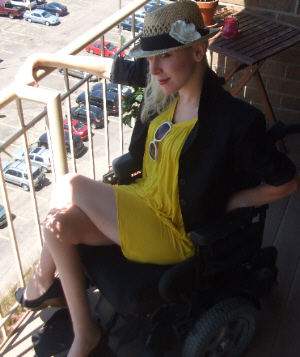-
Hate Chipotle’s high counters too? Wheelchair-user sues, wins
Whatever you do, don’t get between a man and his burrito. You’d think someone who makes burritos by the millions would know this truthitude, but no, Chipotle managed to make this faux pas with their truly thoughtless counter design. Their high counters have been getting off scott-free for years, violating every ADA law in the book, and FINALLY, finally they’re being (legally) chastised. But only in California, for now. The pissed AND hungry wheelchair-user we have to thank is San Diego State University professor Maurizo Antoinetti, who became a paraplegic in the Italian army. He began his crusade against Chipotle in 2005 after he realized he couldn’t see a damned thing.…
-
Custom Battlebot wheelchairs OMG
What’s a engineer with mad skills supposed to do after his stint on Robot Wars ends (and the rest of the year when he’s not working on his insane fire sculptures for Burning Man)? I know! CREATE BATTLEBOT WHEELCHAIRS. And that’s exactly what Lance “aka Blaster” Greathouse did, from making a fire-spurting gun wheelchair to designing a beautiful gothic chair. His wheelchairs make being unable to walk look cool. And I gotta say, no lie, this is the most amazing line of fantastical wheelchairs I’ve ever seen, and I’ve been writing about custom wheelchairs for years (years!). Here’s a taste of some of the Battlebot-esque wheelchairs from…
-
Geckos, mice hair, and O2 deprivation latest in SCI cure hopes
Jockeying to win; world’s top researchers are trying everything to a cure for paralysis. Read more
-
How Do You Wear Your LegaWear?
This is the first entry in my new, Styling with LegaWear blog series, which is a partnership I’m doing with LegaWear (the Swedish adapted clothing company). It will be an ongoing stream of style entries, with a new outfit added each month. Each blog will feature a garment from LegaWear, and how it can be worked into a fabulous outfit idea. Each outfit will be seasonal, and I promise they’ll be easy-to-recreate (I‘ll try my best) and fashion-forward. Onward now to – The Urban Weekend look.
-
Lady Gaga cosplay
Here’s my stab at at the Lady Gaga “Telephone” video costume (the opening prison scene to be exact) for CONvergence (Minneapolis’ annual sci-fi convention). Not bad for a wheelchair girl, right? The dress was orginally a black clubbing dress that I striped using white duct tape. Shades are from Ragstock ($7). Bigger version of costume here





